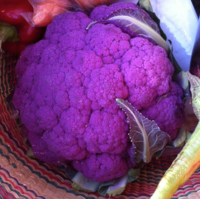
Photo from wikipedia
Abstract One of the major issues of fresh blueberry production is the excessive bruising caused by mechanical impact during harvesting and packaging, which substantially lowers fruit quality and therefore compromises… Click to show full abstract
Abstract One of the major issues of fresh blueberry production is the excessive bruising caused by mechanical impact during harvesting and packaging, which substantially lowers fruit quality and therefore compromises consumer satisfaction as well as the profitability for growers. Spectroscopy and imaging techniques such as hyperspectral imaging have great potential to detect and quantify internal bruises in fruit. It is important to measure the fundamental optical properties of blueberry tissues to better employ spectroscopy or imaging techniques. The aim of this study was to obtain the absorption coefficient (μa), reduced scattering coefficient ( μ s ′ ), and scattering anisotropy (g) of blueberry flesh and skin in the spectral regions of 500–800 nm and 930–1400 nm and investigate the light propagation model of blueberries using Monte Carlo multi-layered (MCML) simulation. The total reflectance, total transmittance, and collimated transmittance of blueberry flesh and skin with three treatments (non-bruised, 30-min bruised, and 24-h bruised) were collected using a single integrating sphere-based spectroscopic system. Using the collected spectra, the inverse adding-doubling (IAD) method was applied to calculate μa, μ s ′ , and g. Results indicated that the differences between bruised (30 min and 24 h) and non-bruised flesh samples for both μ s ′ and g were significant from 930 nm to 1400 nm. Microscope images revealed that the differences were caused by the damaged and ruptured cellular structure of bruised flesh. Although μa, μ s ′ , and g showed significant differences between non-bruised and bruised (30 min and 24 h) flesh in the spectral region of 400–700 nm, the MCML simulation results showed that this spectral region is not effective in detecting bruises due to strong absorption and backward scattering of the blueberry skin. In contrast, the absorption effect of the skin in the near infrared range (930–1400 nm) was small, allowing light to penetrate and interact with the flesh. Therefore, the near infrared spectral region is an effective spectral range for inspecting bruised blueberries using either reflectance or transmittance method. This study reported the optical properties of blueberry skin and flesh with varying degree of bruising for the first time and simulated photon interaction with fruit tissues for bruising detection using MCML. These findings would provide guidance to develop non-destructive sensing methods for blueberry internal bruising detection.
Journal Title: Postharvest Biology and Technology
Year Published: 2019
Link to full text (if available)
Share on Social Media: Sign Up to like & get
recommendations!